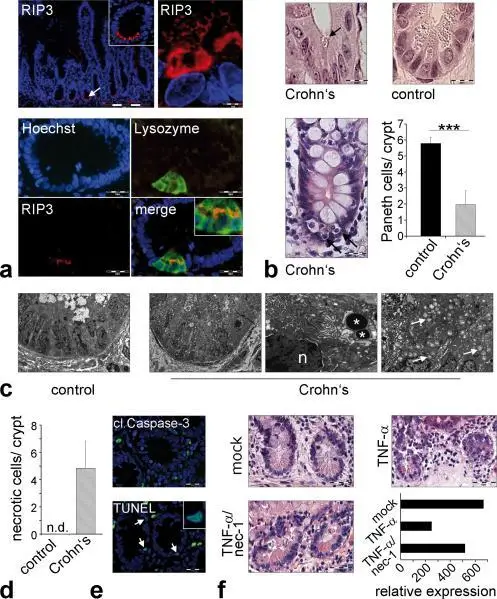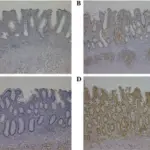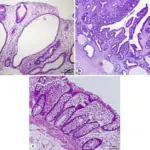
RIP-mediated necroptosis of Paneth cells in patients with Crohn's disease(a) Representative RIP3 immunostaining of the terminal ileum (healthy patient). TOP: RIP3 expression in human Paneth cells. BOTTOM: Colocalization of lysozyme and RIP3 in Paneth cells. (b) H&E staining of crypts in the terminal ileum. Arrows indicate crypt cells with shrunken eosinophilic cytoplasm and pyknotic nuclei. GRAPH: Number of Paneth cells (+SD) per crypt in control patients (n=7) and patients with active Crohn's disease (n=4). (c) Electron microscopy of the terminal ileum of control and Crohn's disease patient. Asterisks highlight Paneth cell granules, “n” indicates nucleus. (d) Number of crypt cells (+SD) showing organelle swelling but regular nuclei as signs of necroptosis. EM pictures of 4 patients were analyzed. (e) Representative immunofluorescence staining for TUNEL and active caspase-3 in crypts of the terminal ileum of a CD-patient. (f) H&E staining of biopsies from the small intestine of control patients stimulated in vitro with either DMSO (mock), TNF-α alone or in combination with necrostatin-1. GRAPH: Quantitative expression level of the Paneth cell marker lysozyme relative to HPRT. Data from one representative experiment out of 2 is shown. Arrow indicate Paneth cells (a,e) or mitochondrial swelling (c). Caspase-8 regulates TNF-α-induced epithelial necroptosis and terminal ileitis. Günther C, Martini E, Wittkopf N, Amann K, Weigmann B, Neumann H, Waldner MJ, Hedrick SM, Tenzer S, Neurath MF, Becker C - Nature (2011). Not Altered. CC.
Crohn disease is type of inflammatory bowel disease IBD. It causes inflammation of your digestive tract.
What is the Pathology of Crohn Disease?
The pathology of crohn disease is:
-Etiology: The cause of crohn disease is unknown.
-Genes involved: None.
-Pathogenesis: The sequence of events that lead to crohn disease are: Chronic inflammation from T-cell activation leading to tissue injury is implicated in the pathogenesis of Crohn disease. After activation by antigen presentation, unrestrained responses of type 1 T helper Th1 cells predominate in Crohn disease as a consequence of defective regulation.
-Histology: The histology associated with Crohn disease shows abnormal colonic tissue.
How does Crohn Disease Present?
Patients with Crohn disease typically all genders present at age of 15 to 70 years. The symptoms, features, and clinical findings associated with Crohn disease include diarrhea, fever, fatigue, abdominal pain and cramping, blood in your stool, mouth sores, reduced appetite and weight loss.
How is Crohn Disease Diagnosed?
Crohn disease is diagnosed by colonoscopy, intestinal endoscopies, and biopsy.
How is Crohn Disease Treated?
Crohn disease is treated by corticosteroids, a more powerful type of anti-inflammatory drug, Anti-inflammatory drugs, Immune system modifiers such as azathioprine Imuran, Azasan and methotrexate.
What is the Prognosis of Crohn Disease?
The prognosis of Crohn disease is good.



